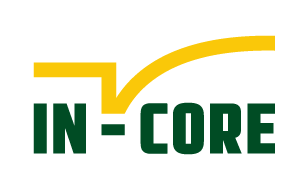Multi-objective retrofit optimization model#
Description
This analysis computes a series of linear programming models for single- and multi-objective optimization related to the effect of extreme weather on a community in terms of three objective functions. The three objectives used in this program are to minimize economic loss, minimize population dislocation, and maximize building functionality.
This analysis computes a series of linear programming models for single- and multi-objective optimization related to the effect of extreme weather on a community in terms of three objective functions. The three objectives used in this program are to minimize economic loss, minimize population dislocation, and maximize building functionality. The analysis uses the set of mitigation strategies, which is determined by the hazard type. For instance, seismic mitigation on existing buildings includes reinforcing buildings with cross bracing, reinforcing buildings using shear walls, install shear anchors, etc. For tsunami and flooding hazards, relocation is one of the mitigation strategies. Various parameters represent, for example, the starting and final retrofitting level of a building, the retrofitting cost for buildings retrofitted from one level to another in groups of structural types, or a coefficient of objective, which represents a community resilience goal to measure the performance of a system. The total number of objectives of the optimization model implemented in pyIncore is currently three; economic loss, population dislocation and building functionality constraints.
The computation proceeds by iteratively solving constrained linear models using epsilon steps. The CSV outputs of the computation are collections of optimal resource allocations.
Contributors
Science: Charles Nicholson and Yunjie Wen
Implementation: Dale Cochran, Tarun Adluri, Jorge Duarte, Diego Calderon, Santiago Núñez-Corrales, and NCSA IN-CORE Dev Team
Related publications
Input parameters
key name |
type |
name |
description |
|---|---|---|---|
|
|
Result name |
Result CSV dataset name. |
|
|
Model solver |
Choice of the model solver to use. Gurobi is the default solver. |
|
|
Epsilon values |
Number of epsilon values to evaluate. |
|
|
Maximum budget |
Selection of maximum possible budget. |
|
|
Budget value |
Custom budget value. |
|
|
Identifier of submodels |
Identifier of submodels to inactivate during analysis. |
|
|
Scaling data |
Choice for scaling data. |
|
|
Scaling factor |
Custom scaling factor. |
Input datasets
key name |
type |
name |
description |
|---|---|---|---|
|
Building-related data |
A csv file with building-related data. |
|
|
Strategy cost |
A csv file with strategy cost data per building. |
Output datasets
key name |
type |
parent key |
name |
description |
|---|---|---|---|---|
|
Results |
A csv file with an optimal solution for decision variable x for Economic loss, Population dislocation and Building functionality values, results of objective function values. |
||
|
Results |
A csv file with an optimal solution for decision variable y with initial and final retrofitted strategies for Economic loss, Population dislocation and Building functionality values, results of objective function values. |
(* required)
Execution
code snippet:
# Create Multi-objective retrofit optimization instance
opt = `MultiObjectiveRetrofitOptimization`(client)
# Load input dataset
opt.load_remote_input_dataset("building_related_data", building_related_data)
opt.load_remote_input_dataset("strategy_costs_data", strategy_costs_data)
# Specify the result name
result_name = "Multi_objective_retrofit_optimization"
# Set analysis parameters
opt.set_parameter("result_name", result_name)
opt.set_parameter("model_solver", "Gurobi")
opt.set_parameter("num_epsilon_steps", 10)
opt.set_parameter("max_budget", max_budget)
opt.set_parameter("budget_available", 1000000)
opt.set_parameter("inactive_submodels", [inactive_submodels])
opt.set_parameter("scale_data", True)
opt.set_parameter("scaling_factor", 1.0)
# Run Multi-objective retrofit optimization analysis
opt.run_analysis()
full analysis: multi_retrofit_optimization.ipynb
